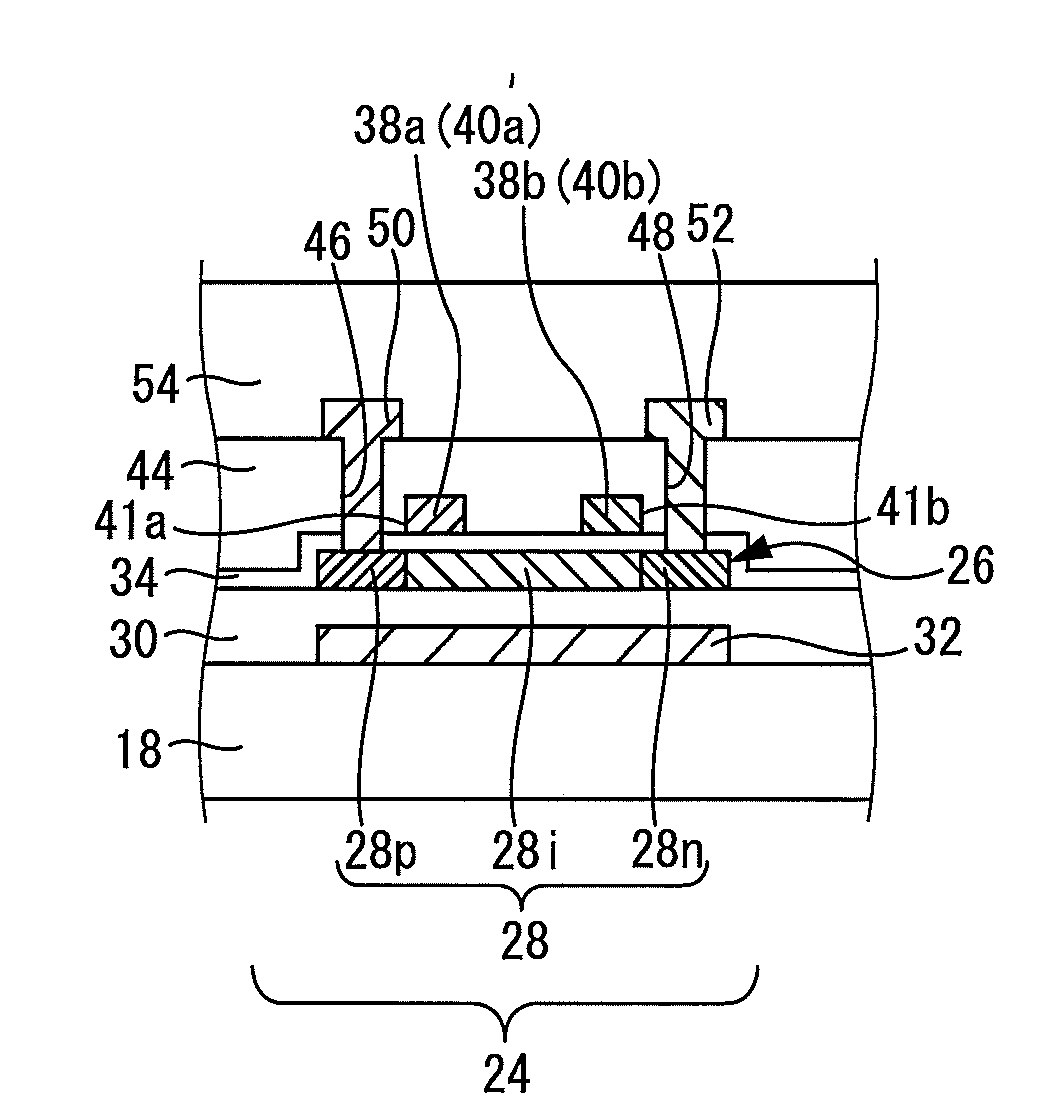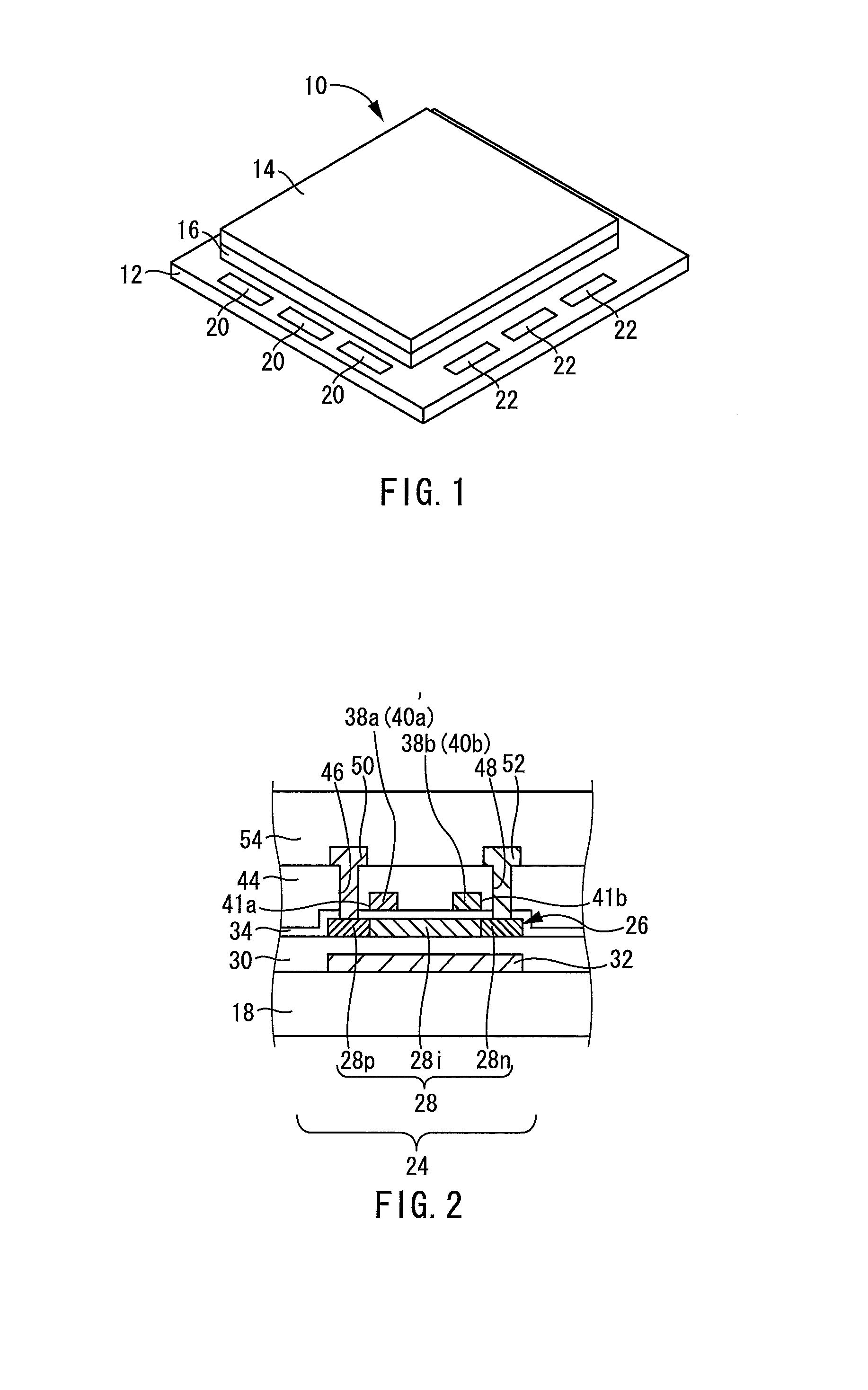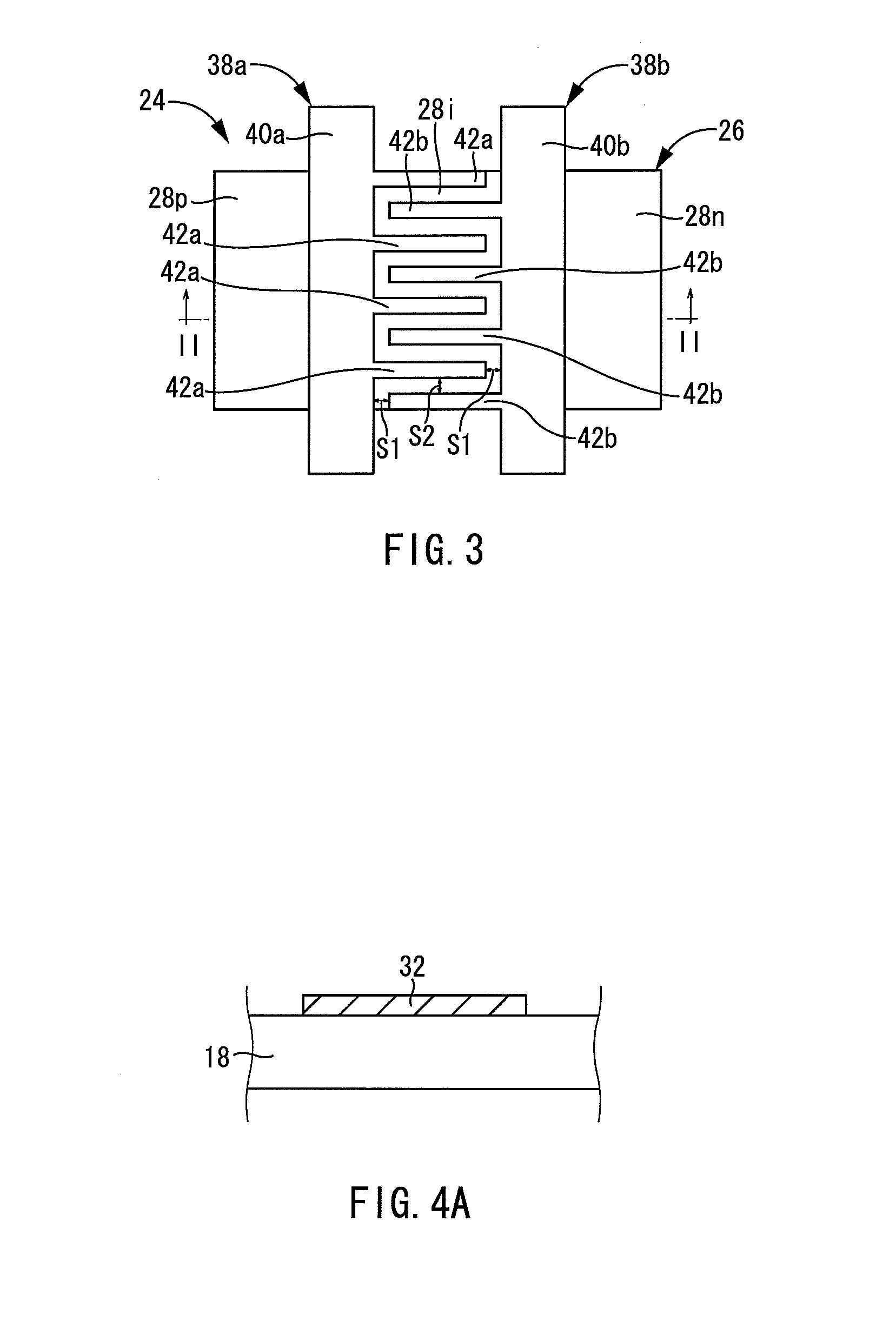Optical sensor comprising a photodiode having a p-type semiconductor region, an intrinsic semiconductor region, and an n-type semiconductor region
a technology applied in the field of optical sensors and liquid crystal panels, can solve the problems of reducing light conversion efficiency, reducing light receiving area, and reducing output, so as to improve light detection sensitivity
- Summary
- Abstract
- Description
- Claims
- Application Information
AI Technical Summary
Benefits of technology
Problems solved by technology
Method used
Image
Examples
embodiment 1
[Embodiment 1]
[0034]FIG. 1 shows a liquid crystal panel 10 as one embodiment of the present invention relating to a liquid crystal panel. This liquid crystal panel 10 includes an active matrix substrate 12, a counter substrate 14, and a liquid crystal layer 16 sealed between these substrates 12 and 14.
[0035]The active matrix substrate 12 includes a glass substrate 18 as a substrate (see FIG. 2). On the glass substrate 18, a plurality of pixels (not shown) are formed in matrix. Each pixel thus formed includes a thin film transistor as an active element, and a pixel electrode. On the glass substrate 18, a region where the plurality of pixels are formed in matrix is a display region, which is not shown.
[0036]At a position opposed to this display region, a counter substrate 14 is provided. It should be noted that a counter electrode and color filters are provided on the counter substrate 14, though not shown.
[0037]Further, on the glass substrate 18 provided in the active matrix substrat...
embodiment 2
[Embodiment 2]
[0088]Next, Embodiment 2 of the present invention relating to an optical sensor is explained based on FIG. 5. It should be noted that members and portions in Embodiment 2 described below, and in Embodiment 3 to be described later, having the same configurations as those in Embodiment 1, are denoted by the same reference numerals as those in Embodiment 1 in the drawings, and detailed explanations of the same are omitted.
[0089]An optical sensor 64 of the present embodiment is different from the optical sensor (24) of Embodiment 1 regarding extension lines 66a and 66b in the gate lines 38a and 38b. The extension lines 66a and 66b of the present embodiment include parallel extension portions 68a and 68b, and perpendicular extension portions 70a and 70b, respectively.
[0090]The parallel extension portions 68a and 68b extend in the direction parallel with the forward direction of the photodiode 26, with approximately constant line widths, from the boundary definition lines 40...
embodiment 3
[Embodiment 3]
[0092]Next, Embodiment 3 of the present invention relating to an optical sensor is explained based on FIG. 6. An optical sensor 72 of the present embodiment is different from the optical sensor (24) of Embodiment 1 regarding extension lines 74a and 74b of the gate lines 38a and 38b.
[0093]The extension lines 74a and 74b of the present embodiment are shaped so that a line width of each decreases with increasing proximity to the end in the extending direction. Clearances S6 formed between extension ends of the extending lines 74a and 74b and the boundary definition lines 40b and 40a, respectively, and a clearances S7 formed between the extension line 74a and the extension line 74b may have a width of 3 to 5 μm each.
[0094]The embodiments of the present invention, which have been described in detail so far, are merely illustrative examples, and the present invention is not limited by the above-described embodiments at all.
[0095]For example, in Embodiments 1 to 3, the appli...
PUM
| Property | Measurement | Unit |
|---|---|---|
| width | aaaaa | aaaaa |
| thickness | aaaaa | aaaaa |
| thickness | aaaaa | aaaaa |
Abstract
Description
Claims
Application Information
 Login to View More
Login to View More - R&D
- Intellectual Property
- Life Sciences
- Materials
- Tech Scout
- Unparalleled Data Quality
- Higher Quality Content
- 60% Fewer Hallucinations
Browse by: Latest US Patents, China's latest patents, Technical Efficacy Thesaurus, Application Domain, Technology Topic, Popular Technical Reports.
© 2025 PatSnap. All rights reserved.Legal|Privacy policy|Modern Slavery Act Transparency Statement|Sitemap|About US| Contact US: help@patsnap.com



